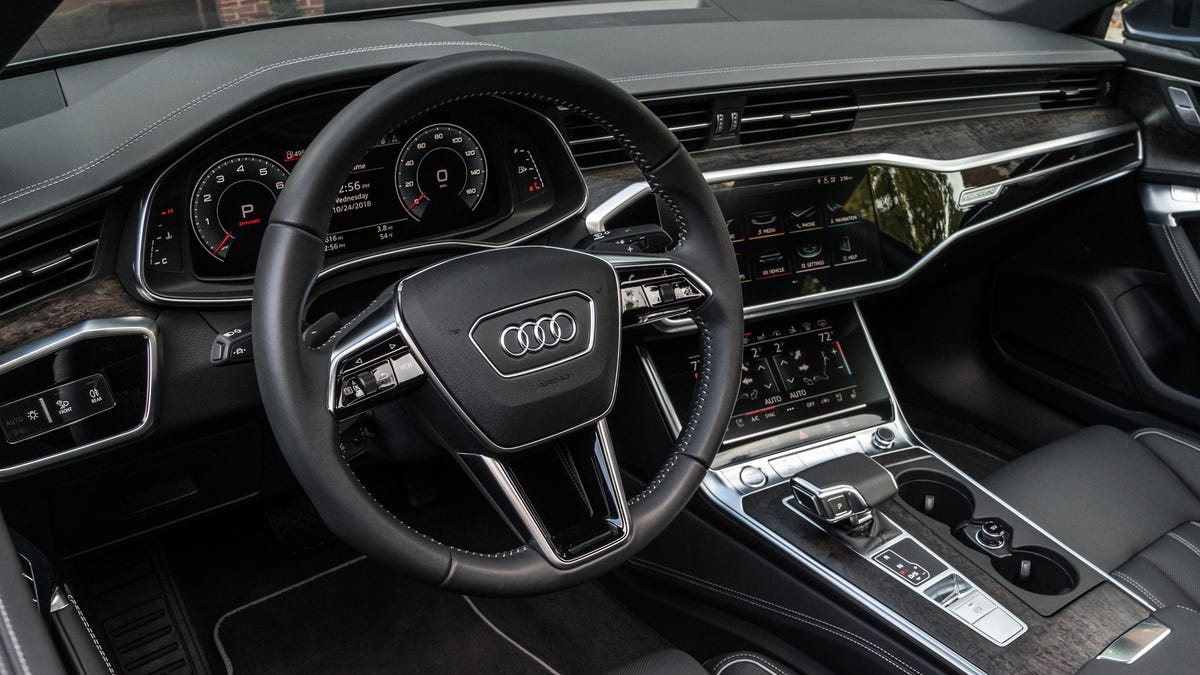Why cars have so many screens
Are they better than dials and knobs, or just more tech?

The Tesla Model 3 has inspired a number of emails asking me if screens in cars are better -- or just cooler -- than knobs and gauges? I can tell you carmakers will vote for screens in the long run.
There's a schism between car owners who really like the richness of screen displays and those who don't trust the hardware to always work, feel it is unnecessarily distracting or simply hate digging through the menus that invariably accompany screens.
If you are in the latter group, gird yourself for the future: Cars will increasingly go screen for a handful of reasons.
Maps: Map-based turn-by-turn navigation has revolutionized driving, both in terms of how to get somewhere and how to discover places worth a visit. Whether you use Android Auto, Apple CarPlay or your car's built-in nav, you need a generous screen to make the experience work. Until fully autonomous cars are ubiquitous, interacting with a nav screen is an appetite that isn't going to fade.
Cameras: Rear cameras are required on new cars, and next in line for ubiquity will be front and side cameras, followed by night-vision cameras. All of those need a big center screen (or maybe a smaller side screen) to display on.
Media: Podcasts, streams and second-row video all demand a screen to either display content or, at a minimum, meta information and album art. Few of us would be content to see our media information laid out on a scrolling line of dot matrix text.
Audi's Virtual Cockpit was the first example of how a fully flexible screen interface could inhabit a traditional gauge location and do so at a reasonable price: It debuted in the 2016 Audi TT, not the flaship A8.
Flexibility: Devoting 10 or 12 square inches to a speedometer, or worse, to a tachometer that only does one thing, is rapidly becoming a crude waste of space. When that same amount of real estate is devoted to a screen it can be used for a wide variety of displays that change with driving context. Audi's Virtual Cockpit is the best, but far from the last, example of this we'll see.
Updates: Over-the-air updates can't change a dash composed of gauge faces and knobs the way it can a screen-based instrument panel. Such updates open the door to increased owner satisfaction while they own a car, a holy grail to carmakers who are obsessed with purchase loyalty. As long as they don't push out a bum update that sends your owners to the door.
The extreme screen-centrism of the Tesla Model 3 isn't likely to take over auto design anytime soon; even among Teslarati it can be controversial. But it does point the way to an interface for all seasons.
Cost: Until recently, in-car screens were a pricey upgrade from knobs and dials, but as you see them invading popularly priced cars know that the economics of LCD have changed. The Tesla Model 3 is radical in its uses of a single center tablet, but I suspect that extreme design choice actually saves Tesla money and helps creates massive buzz around the car.
That said, I don't expect the Model 3's extreme screen-centrism to take over auto design any time soon. A mix of dominant screens along with tactile switchgear for commonly used functions seems to be a happier medium.

